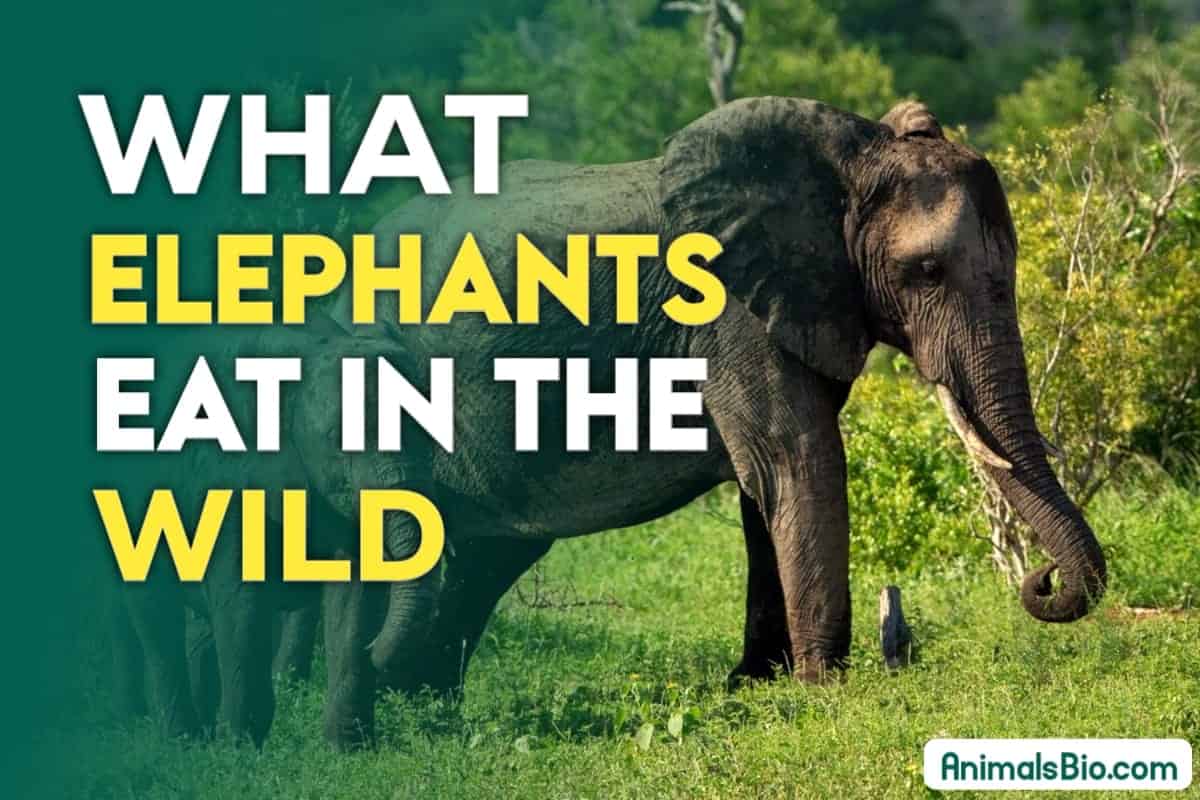Elephants are majestic creatures that capture the admiration of many around the world. Known for their impressive size and intelligence, these gentle giants are also fascinating when it comes to their eating habits.
In the wild, elephants are strictly herbivores, which means their diet consists entirely of plants. Understanding what elephants eat in their natural habitat can give us insights into their behavior and the crucial role they play in their ecosystems.
What do Elephants Eat in the Wild
Elephants eat a variety of plant-based foods including grass, leaves, fruit, twigs, and even the bark of trees. They are known for their ability to consume large quantities of food every day.
An adult elephant can eat up to 300 pounds (about 136 kilograms) of vegetation daily, depending on its size and the type of habitat it lives in.
1. Grass: The Staple Food
Grass makes up the largest part of an elephant’s diet, especially for those living in savannas and grasslands. Elephants use their strong and flexible trunks to pull up clumps of grass, often consuming the roots and all.
This not only helps them get more nutrients but also clears the ground for new grass to grow, which benefits the ecosystem.
2. Leaves and Branches: High Up on the Menu
Elephants also consume a lot of leaves, twigs, and branches from bushes and trees. They are capable of reaching higher branches by standing on their hind legs or by using their trunks to shake or break branches.
In forests, this behavior helps them to eat their fill but also plays a critical role in pruning the vegetation, which encourages new growth and maintains the health of the forest.
3. Fruit: A Sweet Treat

Fruits are a favorite among elephants when they are available. Eating fruit provides important vitamins and nutrients, and also aids in seed dispersal.
As elephants roam, the seeds from the fruits they consume are excreted in different locations, helping to spread and grow new plants throughout their habitat. This is vital for the regeneration of many plant species.
Suggested Article : Why do Mountain Goats Climbing
4. Bark: More Than Just Wood
The bark of trees is a crucial part of an elephant’s diet, particularly in the dry season when other food sources may not be as plentiful. Bark contains minerals and rough fibers that are essential for digestion.
Elephants strip the bark from trees using their tusks and trunk, an action that can sometimes lead to damaging trees, but it also helps to control tree populations and maintain ecological balance.
5. Other Vegetation
Depending on the season and the region they inhabit, elephants might consume other types of vegetation, such as flowers or water plants. Each part of their diet plays a role not only in their nutrition but also in the health of their environment.
The Role of Elephants in Their Ecosystems
The feeding habits of elephants have profound impacts on their surroundings. By eating vast amounts of vegetation, they help to shape the landscape, creating clearings and paths that other animals use.
Their preference for certain plants helps to maintain a balance in species composition, thereby influencing the overall biodiversity of the area.
Moreover, elephants are considered “ecosystem engineers” because of their ability to modify their habitat. Their movements across vast landscapes help to create waterholes used by other species, and their dung enriches the soil, promoting plant growth.
Conservation Challenges
Despite their significant ecological roles, elephants face numerous threats, primarily from human activities. Habitat loss, poaching, and conflicts with humans are major challenges that threaten their survival.
Understanding and appreciating the natural diet of elephants and their role in the ecosystem is crucial for their conservation. By protecting elephants, we also preserve the rich biodiversity of their habitats and maintain the health of our planet.
Conclusion
Elephants are not just the largest land animals on Earth; they are key players in their ecosystems. Their diet and feeding habits are closely linked to their environment, influencing and shaping it in multiple ways.
As we continue to study and understand these magnificent animals, it becomes increasingly clear how important it is to protect them and their natural habitats. Not only for their survival but for the well-being of the entire ecosystem which depends on them.
By fostering a deeper appreciation for these incredible animals and the intricate relationships they have with their environment, we can hope to secure a future where elephants continue to thrive in the wild.
Frequently Asked Questions (FAQ)
How Long do Elephants Live ?
Elephants usually live for about 60 to 70 years. But some can live even longer, up to 80 years or more. So, they’re like long-living giants in the animal kingdom!
How Many Elephants are Left in the World ?
There are around 415,000 African elephants and 40,000 to 50,000 Asian elephants left in the world according to the usatoday news in march 2023.
But sadly, their numbers are declining due to threats like poaching and habitat loss. So, it’s important to protect these amazing animals!
How Fast can Elephants Run ?
Elephants can reach speeds of up to 25 miles per hour (40 kilometers per hour) when they run. Despite their large size, they’re surprisingly quick when they need to move!
How do Elephants Sleep ?
Elephants sleep for around 4 to 6 hours a day, usually during the night. They can sleep standing up or lying down, often leaning against a tree for support. They also take short naps while standing throughout the day.
How Big are Elephants ?
Elephants are really big! They can weigh anywhere from 2,000 to 6,000 kilograms (4,400 to 13,200 pounds), depending on the species. And they can stand as tall as 2.5 to 4 meters (8 to 13 feet) at the shoulder. That’s taller than most people!






